Vacanita de los Melonares (Epilachna chrysomelina): [Characteristics, Detection, Effects and Treatment]
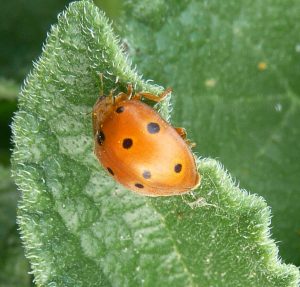
What is the vacanita of the melon groves?
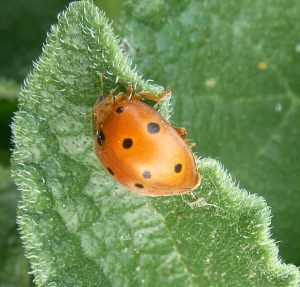 The Vacanita de los melonares, with the scientific name Epilachna chrysomelina, is a beetle very similar to the famous «ladybugs» in its adult state, belonging to the Coccinellidae family, which has managed to have a presence throughout the world, with some 4,500 species of different sizes.
The Vacanita de los melonares, with the scientific name Epilachna chrysomelina, is a beetle very similar to the famous «ladybugs» in its adult state, belonging to the Coccinellidae family, which has managed to have a presence throughout the world, with some 4,500 species of different sizes.
In some countries, they are also commonly called: Vaquita de San Antonio (Argentina) Cocos (Spain and Venezuela) Chinita (Galicia-Spain), Vaquita de San Antón (Canary Islands-Spain), among others, but the most popular is Mariquita, no matter the variety of coconut.
They are herbivorous insects, of the Epilachninae subfamily, which are known as herbivorous ladybugs, unlike their carnivorous cousins, for which they are considered pests that affect cucurbitaceous species, since they can eat leaves, grains and seeds of cultivated species.
They really like to eat the leaves, flowers and fruits of commercial species such as melons, watermelons, pumpkins, cucumbers, among others, so it can cause considerable economic losses, since it deforms and depreciates, therefore, the value of the fruit..
How can we identify it?
These beetles are not difficult to recognize in full activity. Let’s see.
- They are characterized by the fact that on their oval body, they have about 10 harmonically distributed black dots, which contrast with an intense orange. Although there are other colors: yellow, red, orange and black.
- They have stiff-looking elytra and antennae that protect the true wings.
- They also have 2 pairs of legs and a black head.
- The eggs are laid on the underside of the leaves, in groups of about 50 units and when the larvae come out of them, they eat the entire lower part, leaving the epidermis of the bundle practically intact, thanks to a powerful mandible shaped like a pincers.
- The larvae, called “hedgehogs”, are yellow and can be recognized because they are covered with highly visible spines, with a total length of approximately 1 cm. They change to adult in a month of life.
- The feeding habits are diurnal, but in the winter they hibernate in the weeds near the melon beds, until they come out in spring (April-May) to eat and reproduce. Worse are animals that in their adult condition prefer to be alone.
- The adults also feed on the underside of the leaves, rendering them useless with their fierce bites, thus causing tremendous damage to the affected plantations.
- They have the ability to procreate about two generations a year.
The panorama of the cultivar can become bleak if this herbivore is left to act at will, since it has a very high voracity, leaving the plants in a ruinous state, which will change their appearance, easily seeing stained and hollowed out or translucent areas, where only the epidermis remains.
What plants does the vacanita of the melon orchards affect?
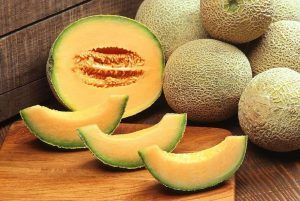 This beetle pest prefers to live on the leaves of melons, watermelons, watermelons, pumpkins, cucumbers and similar species, which is more than enough reason to eliminate them as soon as they appear in spring in search of food.
This beetle pest prefers to live on the leaves of melons, watermelons, watermelons, pumpkins, cucumbers and similar species, which is more than enough reason to eliminate them as soon as they appear in spring in search of food.
Mainly, this pest species can cause significant damage to melons and watermelons, if it is not combated effectively and at the beginning of its invasion, because they prevent a good harvest of the fruits and in the most serious cases they completely ruin the plant, by preventing to bear fruit again. And if it does produce them, they will be misshapen, inedible at all.
They are very common in the tropical regions of the planet and temperate regions.
How to combat the vacanita of the melon fields?
Among the most important preventive measures are:
Crop rotation
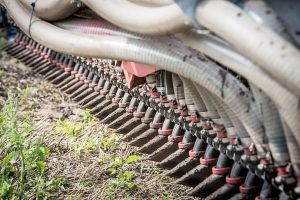 Whenever you have cultivars of cucurbit species, you must maintain the healthy practice of crop rotation, especially if you have previously harvested species that have been attacked by pests.
Whenever you have cultivars of cucurbit species, you must maintain the healthy practice of crop rotation, especially if you have previously harvested species that have been attacked by pests.
To do this, it is highly recommended to look for another very well ventilated piece of land, while resistant species are grown in the already harvested area.
certified seeds
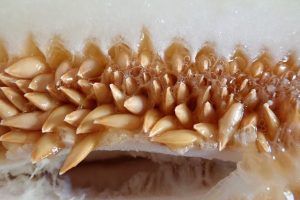 An excellent practice that prevents the appearance of pests and viral and fungal diseases is to acquire certified, guaranteed seeds from nurseries and trusted establishments, so as not to run unnecessary risks.
An excellent practice that prevents the appearance of pests and viral and fungal diseases is to acquire certified, guaranteed seeds from nurseries and trusted establishments, so as not to run unnecessary risks.
clear weeds
Another healthy prevention measure consists of the constant elimination of weeds and organic waste from the cultivation area, to prevent eggs and adults from spending the night.
Biologic control
A super effective way to keep them under control is with the introduction of wasps or parasitoids in the cultivar, but if their natural predators decrease, they can increase and cause serious problems, because they are capable of behaving like a true pest and damaging the fruits.
What are the best products to eliminate vacanita from melon groves?
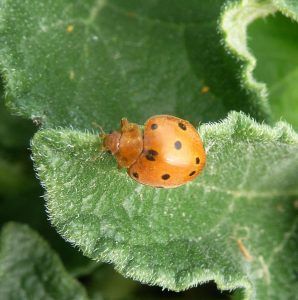 A widely used insecticide to eliminate this pest is Carbaryl 5% in a granulated presentation, which should be sprinkled on the plants as soon as the first adults of the Vacanita de los melonares appear, in order to interrupt the reproductive cycle.
A widely used insecticide to eliminate this pest is Carbaryl 5% in a granulated presentation, which should be sprinkled on the plants as soon as the first adults of the Vacanita de los melonares appear, in order to interrupt the reproductive cycle.
Lead arsenate-based sprays are also used, in a dose that includes 500 grams per 100 liters of water.
First, a kind of paste is prepared with the arsenate, adding a little water until it is completely moistened without leaving lumps and gradually this porridge will dissolve in the rest of the water, preventing it from going to the bottom.
This solution is applied to the underside of the leaves, in order to combat larvae and adults. Another insecticide recipe uses powdered calcium arsenate, also applied with a duster or a sulfur machine. But these treatments are only recommended when the plant has small fruits.
Another commercial insecticide formula that is applied to melon crops with good results is Deltaplan, which contains the active ingredient Deltametrin 2.5%, a synthetic pyrethroid capable of controlling not only the Vacanita de los meloneras, but also many other insects such as aphids, drills, thrips, caterpillars, flies, worms of different species, among other bugs that ruin crops.
Deltaplan has a highly convenient repellent activity and quickly penetrates the epidermis of vegetables. It can be used on apricot trees, artichokes, alfalfa, almond trees, cotton trees, hazelnut trees, lettuce, aubergines, grain legumes, corn, peach trees, melon, olive trees, walnut and many other species indicated in the product leaflet.

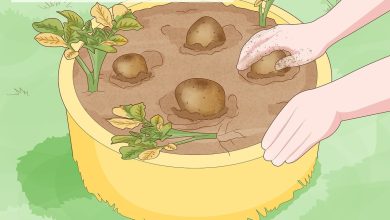

![Photo of Purslane: [Crop, Associations, Pests and Diseases]](https://www.complete-gardening.com/wp-content/uploads/2022/08/purslane-crop-associations-pests-and-diseases-390x220.png)
